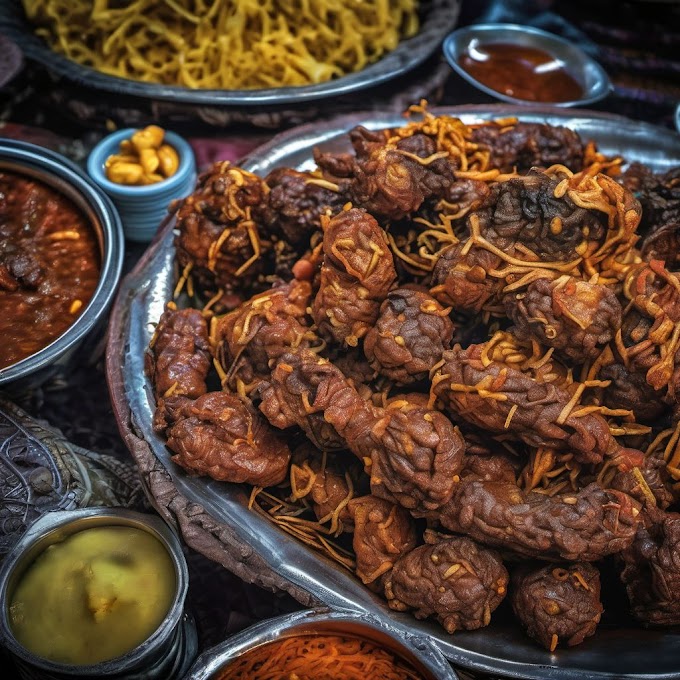

Indian desserts, known as "mithai," are a colorful and diverse array of sweet treats that reflect the country's rich culinary heritage, cultural diversity, and love for sweets. These desserts are an integral part of Indian cuisine, often associated with celebrations, festivals, and important life events. Let's delve into an extensive exploration of Indian desserts, encompassing iconic mithai and their cultural significance.
1. **Historical and Cultural Roots**:
Indian desserts have a deep-rooted history dating back thousands of years. The tradition of making sweets can be traced to ancient times, mentioned in texts like the Vedas. Over centuries, various regions and communities have developed their unique dessert traditions, resulting in a vast and varied repertoire of mithai.
2. **Key Ingredients and Flavors**:
Indian desserts often feature a delightful interplay of flavors such as sweet, tangy, and aromatic spices. Key ingredients include dairy products like milk, ghee (clarified butter), paneer (cottage cheese), and khoya (reduced milk solids). Aromatic spices like cardamom, saffron, and rosewater add depth and fragrance to these treats.
3. **Popular Indian Sweets**:
- **Gulab Jamun**: These soft, syrup-soaked milk-solid dumplings are a staple at festivals and special occasions. The name "gulab" refers to rosewater-flavored syrup, giving it a unique floral taste.
- **Jalebi**: A deep-fried dessert made from a fermented batter soaked in sugar syrup. Jalebi is known for its bright orange color and intricate, pretzel-like shape.
- **Barfi**: A classic Indian sweet made from condensed milk, cooked to a fudge-like consistency and often flavored with cardamom, nuts, or fruits.
- **Rasgulla**: Soft and spongy cheese balls soaked in sugar syrup, originating from the eastern state of Bengal. It's a popular dessert across India and neighboring countries.
- **Halwa**: A versatile dessert, halwa refers to a variety of sweet, dense confections made from ingredients like flour, semolina, lentils, or vegetables, often flavored with ghee and spices.
- **Kheer**: A creamy rice pudding made with milk, rice, sugar, and flavored with cardamom and sometimes garnished with nuts.
- **Ladoo**: Round, bite-sized sweets made from various ingredients like chickpea flour (besan), semolina (sooji), or grated coconut, bound together with ghee and sugar.
- **Kulfi**: A traditional frozen dessert similar to ice cream, made with condensed milk, nuts, and flavored with saffron, cardamom, or rosewater.
- **Malpua**: A fried pancake-like dessert, often served during festivals, made from a batter of milk, flour, and semolina, soaked in sugar syrup.
- **Phirni**: A creamy rice pudding made with ground rice, milk, and flavored with cardamom and saffron. It has a thick, pudding-like consistency.
4. **Regional Variations**:
Indian desserts vary greatly from region to region due to diverse cultures and culinary traditions. For example:
- **Bengali Sweets**: The state of West Bengal is famous for sweets like rasgulla, sandesh, and mishti doi (sweetened yogurt).
- **South Indian Sweets**: Southern states like Tamil Nadu and Karnataka have unique desserts like payasam (a type of kheer), adhirasam, and Mysore pak.
- **Rajasthani Sweets**: Rajasthan is known for its ghevar, malpua, and mawa kachori, among others.
5. **Festivals and Occasions**:
Indian desserts are an integral part of celebrations and festivals. During Diwali, the Festival of Lights, a variety of mithai is exchanged among family and friends. Similarly, during Eid, special desserts like sheer khurma are prepared. Holi, Raksha Bandhan, Durga Puja, and Navaratri are other occasions where a wide assortment of sweets is prepared and shared.
6. **Influence of Ayurveda and Healthy Alternatives**:
Ayurvedic principles have influenced Indian desserts. Many traditional sweets incorporate ingredients considered beneficial for health, such as ghee, nuts, and spices like cardamom. In recent times, there's a growing trend towards healthier versions of mithai using natural sweeteners like jaggery and alternatives to refined flour.
Indian desserts are a testament to the country's culinary prowess, blending centuries-old traditions with modern influences. Each mithai carries the essence of India's diverse culture and is a treat for both the palate and the soul. From the rich, syrupy goodness of gulab jamun to the delicate flavors of kheer, Indian desserts are a sweet symphony that celebrates the vibrant tapestry of this ancient land.





%20(1).png)

